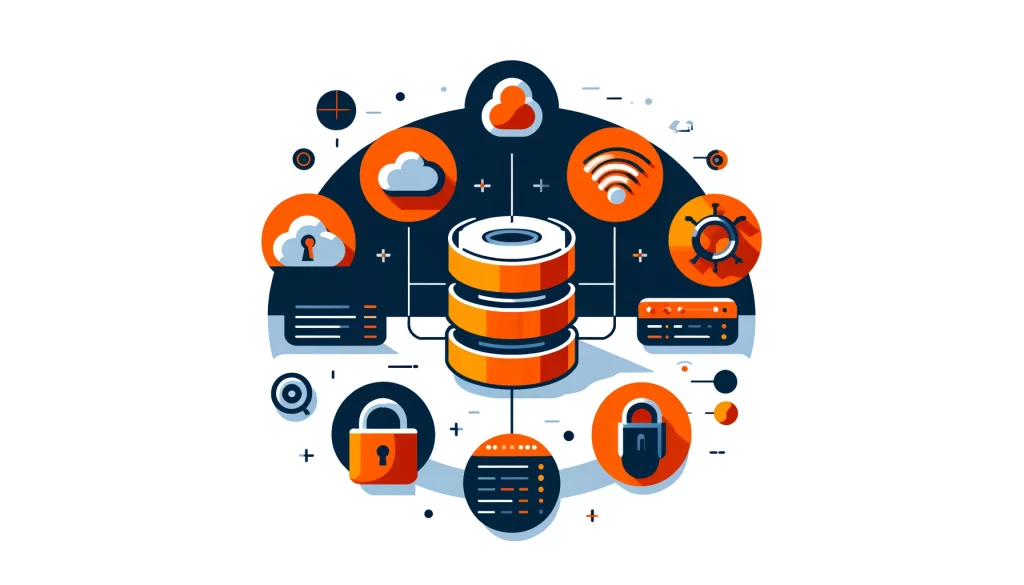
SQL Server Security

SQL Server security is important for protecting your data from unauthorized access, tampering, and loss. It involves implementing measures to keep your database safe. Protecting sensitive information in your SQL Server database is crucial for maintaining trust with customers, stakeholders, and regulators.
To ensure the security of your SQL Server database, it is important to be proactive in implementing security measures. Use strong passwords and multi-factor authentication to keep unauthorized users out of your data. Make sure to update your SQL Server software regularly to fix any security issues that may exist.
Understanding SQL Server Security Threats
First, learn about common security threats before securing your SQL Server database with best practices. One of the most significant risks is SQL injection attacks.
This happens when someone puts harmful SQL commands into application queries, letting them access your database without permission. SQL injection attacks can result in data theft, data manipulation, and even complete control over your database server.
Another danger is privilege escalation. This occurs when users access sensitive data and database functions by taking on the privileges of more trusted roles.
This can happen when users do not properly manage permissions or when users grant excessive privileges. Privilege escalation can lead to data breaches, unauthorized modifications, and other malicious activities.
Denial of service attacks can also impact your SQL Server database, causing slowdowns and downtime. These attacks aim to overwhelm your database server with a flood of requests, making it unavailable to legitimate users.
Denial of service attacks can disrupt your business operations and damage your reputation.
Configuring SQL Server Security
SQL Server provides several built-in features to help you secure your database. One of the most important is authentication. SQL Server supports two authentication modes: Windows authentication and mixed-mode authentication.
Generally, people consider Windows authentication more secure because it relies on the operating system to validate user identities. It leverages Active Directory or local Windows accounts to authenticate users, providing a centralized and integrated security model.
Mixed-mode authentication, on the other hand, allows users to connect using either Windows authentication or SQL Server authentication. SQL Server authentication uses a separate username and password stored within the SQL Server database.
Mixed-mode authentication offers flexibility, but it’s crucial to have strong password rules and secure SQL Server accounts.
Another crucial aspect of SQL Server security is authorization. This involves granting or revoking permissions to users and roles based on their need to access specific database objects.
SQL Server provides a granular permission system, allowing you to control access at the server, database, and object levels. Important to give users only the permissions they need to do their tasks. People know this principle as the principle of least privilege.
SQL Server also offers features like row-level security and dynamic data masking to further enhance security. Row-level security allows you to restrict access to specific rows within a table based on user-defined conditions.
Dynamic data masking hides sensitive data from unauthorized users in real-time. It allows authorized users to access and work with the data. This protection keeps sensitive information secure. Dynamic data masking is a useful tool for maintaining data privacy.
Implementing SQL Server Security Best Practices
To ensure the security of your SQL Server database, there are several best practices you should follow. First, always use strong passwords for your SQL Server accounts. Passwords should be 12 characters long with a mix of uppercase, lowercase letters, numbers, and special characters for security.
Encouraging users to use unique passwords for each account is crucial for maintaining the security of their personal information. When users use the same password for multiple accounts, they are putting themselves at risk of a security breach. Hackers can easily gain access to multiple accounts if they are able to crack just one password. Users can greatly reduce the likelihood of compromising their accounts by using unique passwords for each account.
Implementing password expiration policies is another important step in ensuring the security of user accounts. Changing passwords often can stop hackers from using a compromised password to get into accounts. Organizations can improve security by making users change their passwords regularly to protect sensitive information.
Using unique passwords and setting password expiration rules is important to keep user accounts safe from security risks. By taking these proactive measures, organizations can better protect their users and mitigate the risk of security breaches.
Regularly updating your SQL Server instance with the latest security patches and service packs is also crucial. These updates often include fixes for known vulnerabilities and improved security features.
Stay updated on security alerts and promptly install updates to safeguard your database from possible risks.
Implementing encryption is another best practice for securing your SQL Server database. SQL Server provides several encryption options, such as Transparent Data Encryption (TDE) and Always Encrypted. TDE encrypts the entire database at rest, protecting the data files, log files, and backups from unauthorized access.
Always Encrypted lets you encrypt certain columns with sensitive data. This ensures that the data stays secure even if there is a breach in the database.
Monitoring and Auditing SQL Server
Monitoring and auditing your SQL Server database is essential for detecting and responding to security incidents. SQL Server has built-in auditing features to track user logins, database changes, and permission updates.
Enabling auditing allows you to monitor all actions on your database. This makes it easier to identify any suspicious activities. It also helps in investigating security breaches.
You can use third-party SQL monitoring tools. You can also use built-in auditing. This will help you understand how your database is performing.
Understanding its security will also be helpful. These tools offer advanced features like real-time monitoring, anomaly detection, and customizable alerts.
They can help you proactively identify and respond to security threats, ensuring the integrity and availability of your database.
Securing SQL Server in the Cloud
Lots of organizations are transferring their SQL Server databases to the cloud for its scalability, flexibility, and cost savings. However, securing a cloud-based SQL Server database requires additional considerations.
When using SQL Server on Azure or AWS, it’s important to understand the shared responsibility model for cloud security. This model outlines the division of responsibilities between the cloud service provider and the customer.
When you use SQL Server on a cloud platform, the provider secures the physical infrastructure. This includes data centers, servers, and networking equipment. They also manage the virtualization layer and ensure high availability and disaster recovery capabilities.
On the other hand, the customer is responsible for managing and securing their data within the SQL Server instance. This includes tasks such as configuring access controls, implementing encryption, monitoring for suspicious activity, and performing regular backups.
Organizations can protect their data by following the shared responsibility model when using SQL Server on a cloud platform.
Under the shared responsibility model, the cloud provider is responsible for securing the underlying infrastructure, including the physical servers, network, and storage. They ensure the security and reliability of the cloud platform itself.
As the customer, you are responsible for securing your database and applications on the cloud infrastructure.
To keep your cloud-based SQL Server database secure, follow the same guidelines as you would for an on-site database. This includes using strong passwords, encrypting data, and monitoring for any suspicious activity.
Use security tools from your cloud provider like network security groups and VPNs to keep your data and network safe.
Network security groups control traffic to SQL Server by limiting access to certain IP ranges or subnets. This helps in managing the security of your network. By setting up network security groups, you can ensure that only authorized users can access your SQL Server instances. This adds an extra layer of protection to your data and helps prevent unauthorized access.
VPNs create a secure connection between your local network and the cloud, keeping your data safe while it travels.
The Importance of Regular Security Assessments
Securing your SQL Server database is an ongoing process. It’s essential to regularly assess your database’s security posture to identify and address any vulnerabilities or weaknesses.
Regular security assessments help you protect your data and make sure your security measures are working well.
During a security assessment, you should review your SQL Server configuration, user permissions, and access controls. Identify any unnecessary or excessive privileges and revoke them to minimize the attack surface.
Test your backup and recovery procedures regularly. This will ensure that you can quickly restore your database. Being prepared in case of a security issue or data loss is important.
Keeping your SQL Server security knowledge and skills up to date is necessary. Attend training sessions, workshops, and conferences to learn about the latest security best practices and emerging threats.
Collaborate with your IT security team and database administrators to develop and implement a comprehensive security strategy tailored to your specific needs.
Conclusion
Important to protect your SQL Server database to keep your sensitive data safe. This will help maintain the trust of your customers and stakeholders.
To prevent data breaches and cyber attacks, you should be aware of common security threats. Following best practices and regularly monitoring and auditing your database is also important.
Remember, SQL Server security is a continuous process that requires ongoing attention and effort. Stay proactive, stay informed, and always prioritize the security of your data. Protect your database and help your organization succeed by being proactive about SQL Server security to keep information safe.
Using only native methods for database security is often not enough. DataSunrise provides customers with advanced approaches of protecting data. Book a demo and explore it now.
